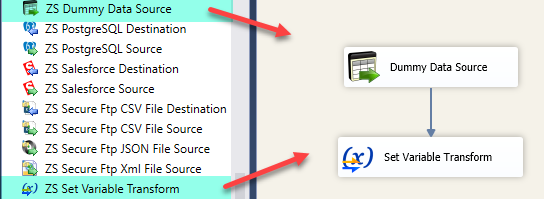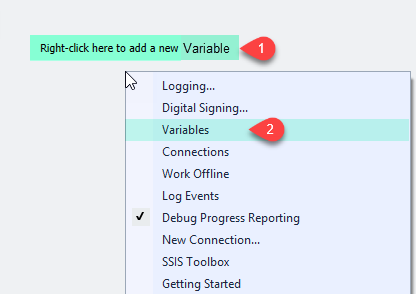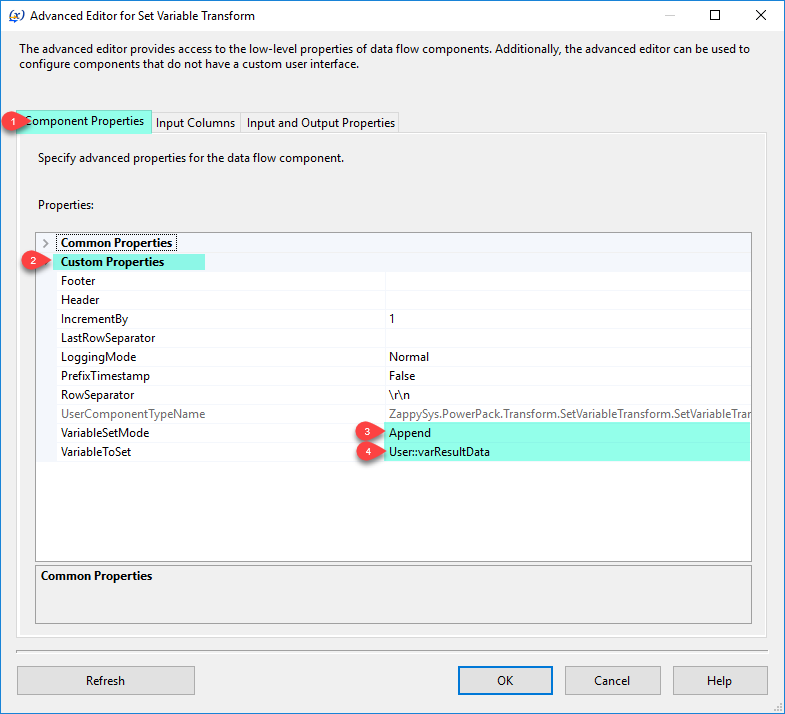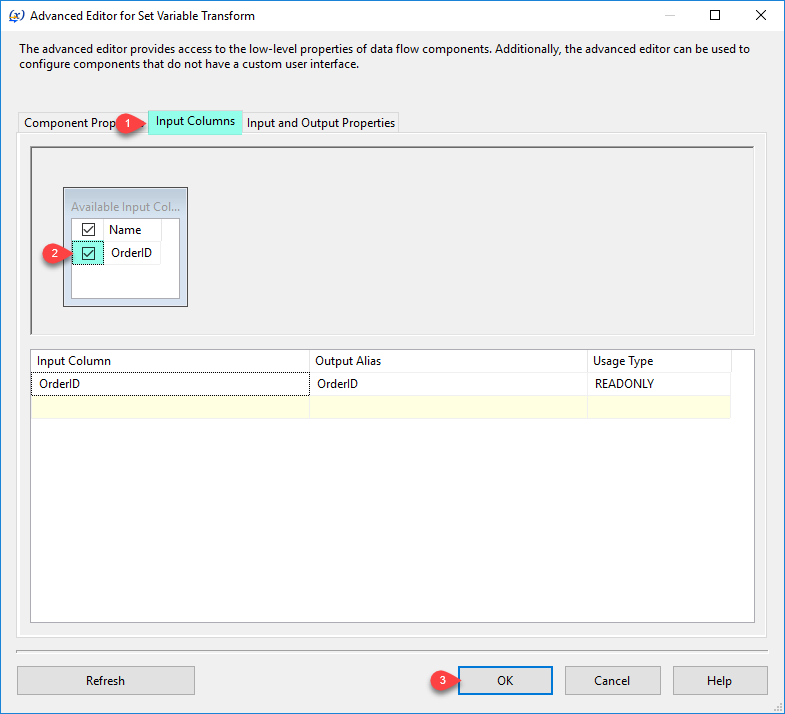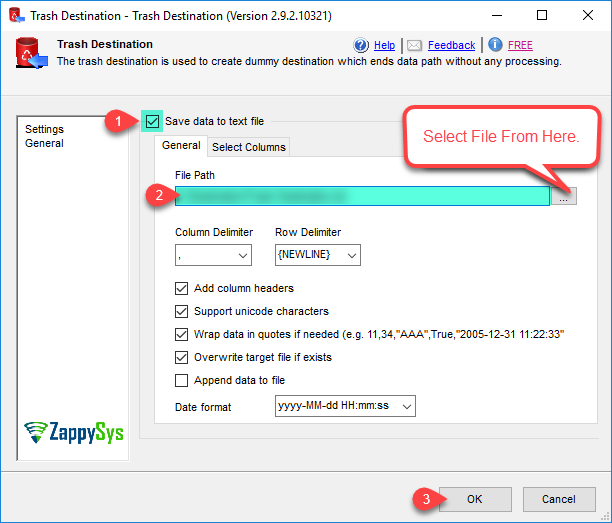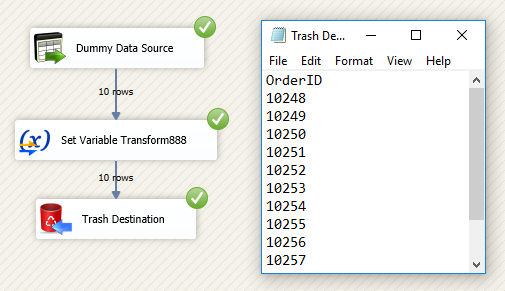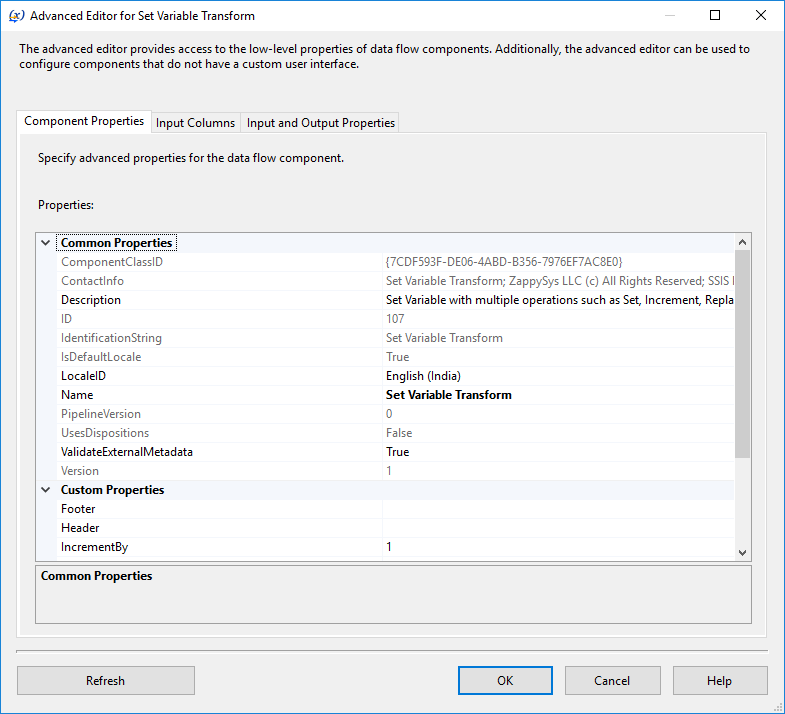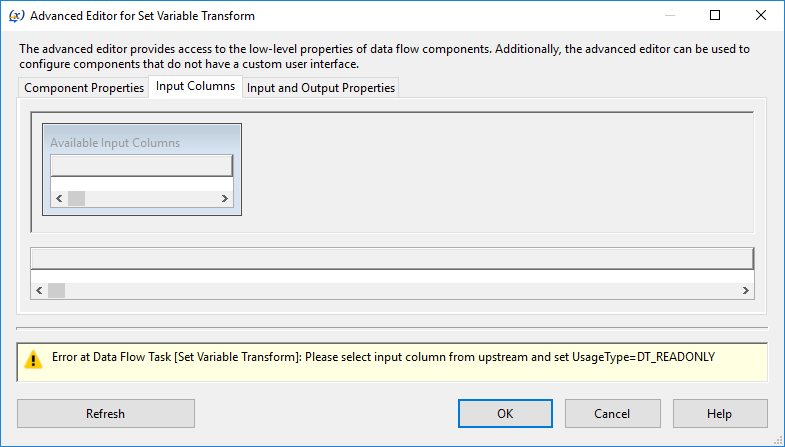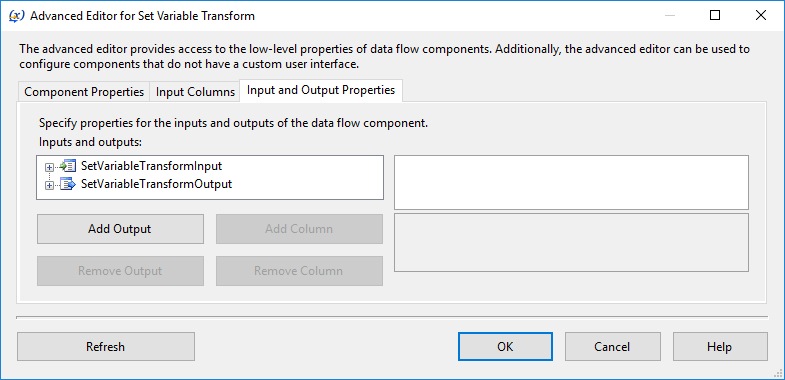Introduction In this post we will show you how to convert varbinary to Base64 in SSIS. We will use FREE Tasks provided by ZappySys. Preparing Sample Data First let’s create a sample table with some Varbinary datatype. Run following command in SSMS to create a sample table with one sample row.
|
SSIS Set Variable Transform
|
 
|



